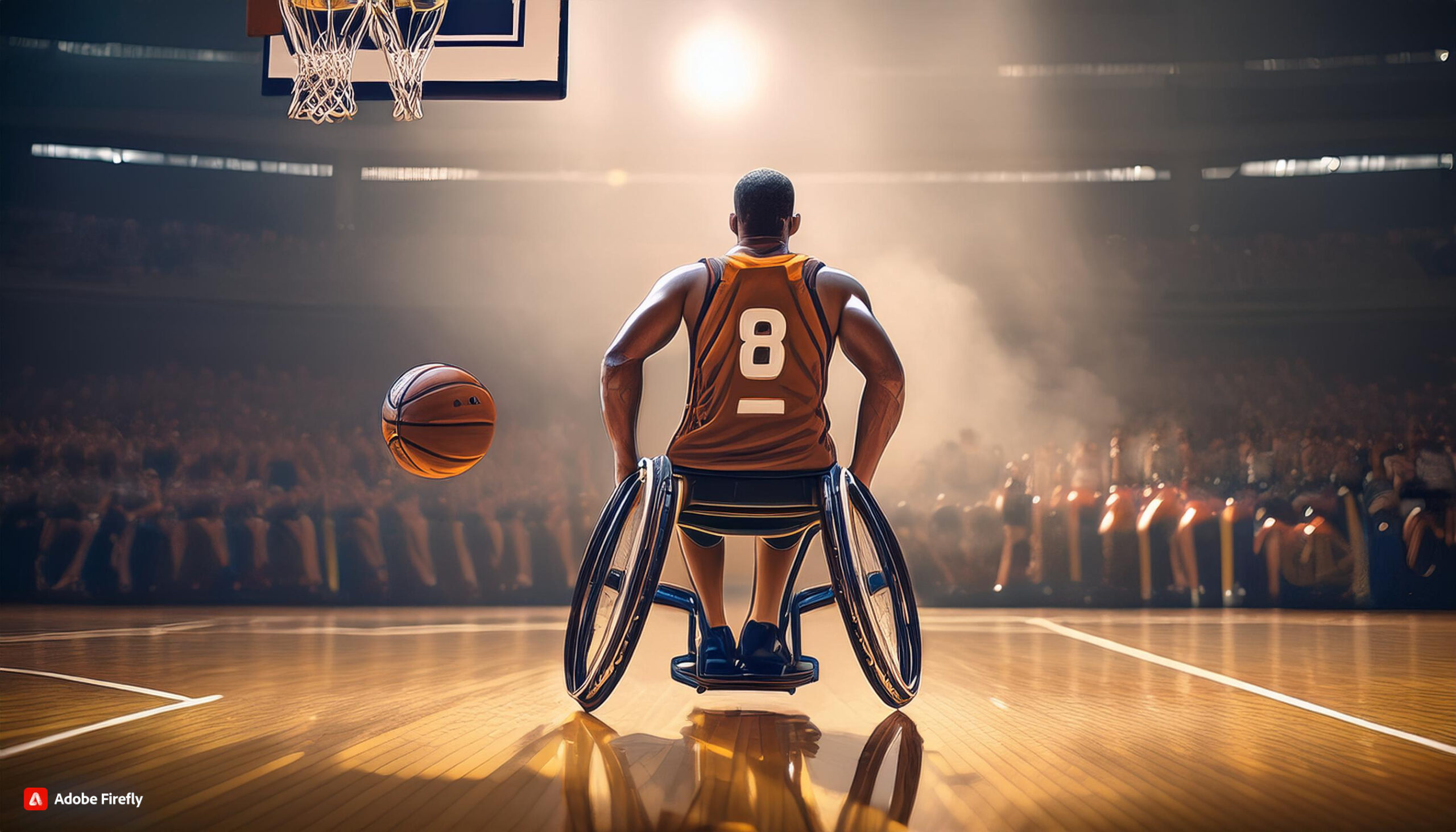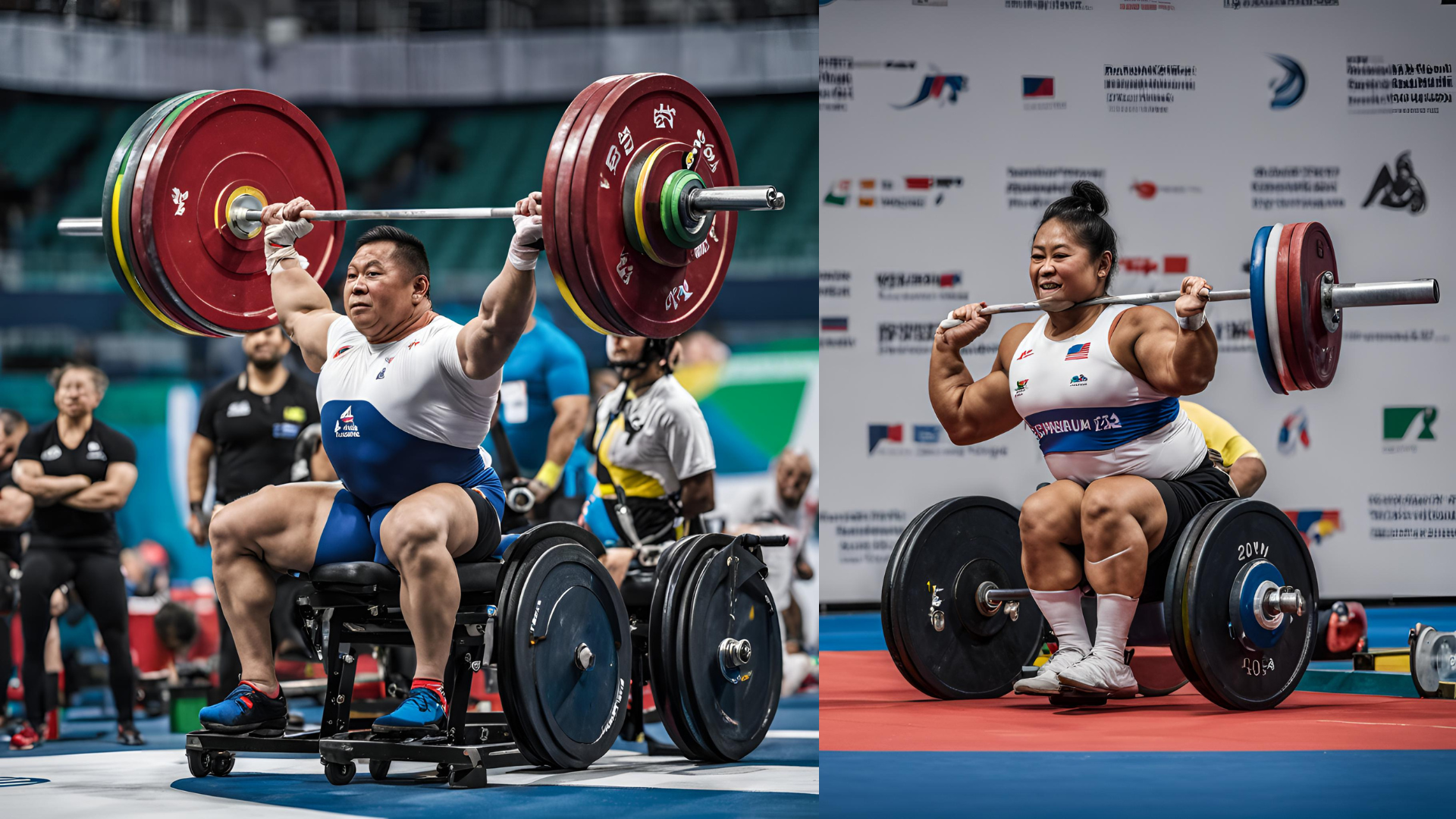Introduction
Wheelchair basketball paralympics is not just a sport; it is a testament to the human spirit’s resilience and adaptability. As one of the premier events in the Paralympic Games, wheelchair basketball brings together athletes from around the world, showcasing their remarkable skills, teamwork, and determination. This comprehensive guide delves into the rich history, intricate rules, and the impact of wheelchair basketball Paralympic movement, highlighting its significance in promoting inclusive and athletic excellence.
Suggested post for you: 8 Most Expensive Laptops: The Ultimate Guide to Buying Expensive Laptops in 2024
The Origins and Evolution of Wheelchair Basketball
The origins of wheelchair basketball can be traced back to the 1940s, a period marked by global conflict and its aftermath. World War II left many soldiers with severe injuries, and as part of their rehabilitation, they were introduced to sports, including basketball. In 1944, Sir Ludwig Guttmann, a German neurologist, founded the National Spinal Injuries Centre at Stoke Mandeville Hospital in the UK, where he introduced sports as a key component of physical therapy for injured veterans. This initiative laid the groundwork for what would eventually become wheelchair basketball.
Initially, the sport was played primarily by military veterans in hospitals and rehabilitation centers. However, its popularity quickly spread beyond these institutions. By the late 1940s, wheelchair basketball had become an organized sport, with teams forming across the United States and the United Kingdom. The first National Wheelchair Basketball Tournament was held in 1949 in the United States, marking a significant milestone in the sport’s development.
The formal introduction of wheelchair basketball to the Paralympic Games occurred in 1960 in Rome, during the inaugural Paralympic Games. This inclusion was a major step forward for the sport, giving it a global platform and encouraging wider participation. The early years of Paralympic wheelchair basketball were dominated by a few nations, but as the sport grew in popularity, more countries began developing their programs, leading to a more competitive and diverse field.
Understanding the Rules and Regulations
Wheelchair basketball, while similar to traditional basketball, has unique rules tailored to the needs of athletes who use wheelchairs. These adaptations ensure that the sport remains competitive and accessible while maintaining the core elements of basketball.
- Court Dimensions and Game Structure: The game is played on a standard basketball court, with the same dimensions and basket height as those used in able-bodied basketball. Each game consists of four quarters, each lasting 10 minutes, with a 15-minute halftime break. If the game is tied at the end of regulation time, an overtime period of 5 minutes is played to determine the winner.
- Wheelchair Mobility and Dribbling: One of the key differences in wheelchair basketball is the rule governing wheelchair movement and ball handling. Players must dribble the ball at least once for every two pushes of their wheelchair. This rule ensures that players maintain a balance between controlling their wheelchair and handling the ball, adding a unique challenge to the sport.
- The Classification System: To ensure fair competition, wheelchair basketball employs a classification system that assigns players a point value based on their physical abilities. This classification ranges from 1.0 to 4.5 points, with lower points indicating a higher level of impairment. Each team is allowed a maximum of 14 points on the court at any time. This system requires teams to carefully strategize their lineup, balancing players with varying levels of ability to optimize performance while adhering to the point limit.
- Fouls and Violations: Wheelchair basketball follows similar fouls and violations rules as traditional basketball. However, specific adaptations are made to account for the use of wheelchairs. For instance, charging and blocking fouls are called based on the position of the wheelchair rather than the body. Players are not allowed to use their feet to gain an advantage, such as by pushing off the floor or an opponent. Violations such as traveling occur when a player takes more than two pushes of the wheelchair without dribbling the ball.
- Equipment Regulations: The wheelchairs used in the sport are highly specialized and must meet specific regulations. These wheelchairs are designed for speed and agility, with slanted wheels for better maneuverability and a lower center of gravity to prevent tipping. The chairs must also fit within certain dimensions, ensuring fairness in competition. Players often work closely with manufacturers to customize their wheelchairs to suit their playing style and position.
The Classification System in Detail
The classification system is a cornerstone of wheelchair basketball, designed to level the playing field and ensure that the sport remains competitive and inclusive. The system categorizes players based on their functional abilities rather than their specific medical conditions. This approach focuses on what players can do on the court rather than their physical limitations.
- Classification Process: Before being allowed to compete, athletes undergo a thorough classification process conducted by trained classifiers. These professionals assess the athlete’s functional abilities, including balance, trunk control, and wheelchair maneuverability. Based on their assessment, athletes are assigned a point value ranging from 1.0 to 4.5, with 1.0 representing the most significant impairment and 4.5 the least.
- Impact on Team Strategy: The classification system significantly impacts team strategy. Coaches must carefully select their lineups, ensuring that the total points on the court do not exceed 14.0. This rule encourages diversity within the team, as players with different classifications bring various strengths to the game. A player with a lower classification might be more limited in mobility but could excel in shooting or defense, making them a valuable team member.
- Examples of Classification: A player classified as 1.0 might have minimal trunk control and require additional support to maintain balance, while a 4.5 player typically has almost full trunk movement and can move quickly across the court. This diversity in abilities adds depth to the game, with teams needing to adapt their strategies based on the strengths and weaknesses of their players.
Men’s and Women’s Competitions
Wheelchair basketball is one of the few sports in the Paralympic Games that offers both men’s and women’s competitions, reflecting the sport’s commitment to gender inclusivity.
- Men’s Competition: The men’s competition has been a part of the Paralympic Games since its inception in 1960. Over the decades, it has grown in competitiveness and prestige. Teams like the United States, Australia, and Canada have traditionally dominated the men’s tournament, thanks to their strong wheelchair basketball programs and the presence of elite players. The men’s competition is characterized by its fast pace and physicality. Games often feature high-scoring contests, with teams employing various strategies, from fast breaks to zone defenses, to outmaneuver their opponents. The tactical depth and skill level displayed in the men’s competition make it one of the most anticipated events of the Paralympics.
- Women’s Competition: The women’s competition was introduced to the Paralympic Games in 1968, and since then, it has grown in stature and popularity. The women’s tournament, like the men’s, has seen the rise of several dominant teams, including the United States, Canada, and the Netherlands. Women’s wheelchair basketball is known for its emphasis on teamwork and precision. While the pace may be slightly slower than the men’s game, the level of skill, strategy, and competitiveness is equally high. The women’s competition has been instrumental in promoting gender equality in sports, inspiring a new generation of female athletes to pursue wheelchair basketball.
- Recent Trends and Developments: In recent years, there has been a noticeable increase in the number of countries participating in both the men’s and women’s competitions. This growth is a testament to the sport’s global appeal and the efforts of national programs to develop wheelchair basketball talent. The inclusion of more nations has led to a more competitive field, making the Paralympic wheelchair basketball tournaments more unpredictable and exciting.
The Impact of Wheelchair Basketball Paralympics Movement
Wheelchair basketball has played a pivotal role in the Paralympic movement, not just as a popular sport but as a symbol of what the Paralympics represent: inclusion, empowerment, and the celebration of human potential.
- Raising Awareness and Changing Perceptions: Wheelchair basketball has been instrumental in changing societal perceptions of people with disabilities. The sport’s visibility on the Paralympic stage has challenged stereotypes and demonstrated that athletes with disabilities can perform at the highest levels of competition. Through their performances, wheelchair basketball players have shown that physical limitations do not define an individual’s abilities or potential.
- Inspiring Participation: The success of wheelchair basketball at the Paralympics has inspired many individuals with disabilities to take up the sport. Grassroots programs around the world have benefited from the increased visibility of the sport, with more young athletes seeking to emulate their Paralympic heroes. This surge in participation has helped to grow the sport at all levels, from local leagues to international competitions.
- Promoting Inclusivity in Sports: The sport has also been a driving force behind broader efforts to promote inclusivity in sports. Wheelchair basketball’s presence in the Paralympics has encouraged other sports organizations to adopt more inclusive practices, ensuring that people with disabilities have access to sporting opportunities. This has led to the development of adaptive sports programs and initiatives aimed at increasing participation among individuals with disabilities.
- Technological Innovations: The evolution of wheelchair basketball has spurred advancements in wheelchair technology, with manufacturers continuously improving designs to enhance performance. These innovations have not only benefited elite athletes but have also had broader applications, improving the quality of life for people who rely on wheelchairs for mobility.
Technological Advancements in Wheelchair Basketball
The evolution of wheelchair basketball has been closely tied to technological advancements in wheelchair design. These innovations have transformed the sport, allowing athletes to push the boundaries of their performance.
- The Evolution of Sports Wheelchairs: Early wheelchairs used in the sport were basic and not specifically designed for basketball. As the sport grew, so did the need for specialized equipment. Modern sports wheelchairs are now highly advanced, built from lightweight materials like aluminum and titanium to enhance speed and agility. The chairs are designed with slanted wheels for better maneuverability and a low center of gravity to prevent tipping during sharp turns and high-speed movements.
- Customization for Performance: Each wheelchair is custom-built to suit the specific needs of the athlete. Factors such as the player’s classification, position, and playing style are all considered in the design process. For example, a forward who relies on speed might have a chair designed for maximum acceleration, while a center might use a chair that provides greater stability and strength for rebounding.
- Impact on the Game: These technological advancements have had a significant impact on the way wheelchair basketball is played. The increased speed and agility provided by modern wheelchairs have made the game faster and more dynamic, with players able to execute more complex maneuvers and strategies. This has led to a higher level of competition and more exciting games for spectators.
- Challenges and Future Innovations: Despite these advancements, challenges remain in ensuring that wheelchair technology is accessible to all athletes, particularly those from developing countries. The cost of a high-performance sports wheelchair can be prohibitive, limiting access for some athletes. Looking ahead, there is ongoing research and development aimed at creating more affordable yet effective wheelchairs, as well as exploring new materials and technologies that could further enhance performance.
Notable Athletes and Teams in Wheelchair Basketball
Wheelchair basketball has produced many legendary athletes and teams that have left an indelible mark on the sport and the Paralympic movement.
- Patrick Anderson (Canada): Often regarded as one of the greatest wheelchair basketball players of all time, Patrick Anderson has been a dominant force in the sport for over two decades. Known for his scoring ability, court vision, and leadership, Anderson has led Canada to multiple Paralympic gold medals. His influence extends beyond his on-court achievements, as he has been an ambassador for the sport, inspiring countless young athletes.
- Chantal Benoit (Canada): Chantal Benoit is another Canadian legend, widely recognized as one of the best female wheelchair basketball players in history. Over her illustrious career, she helped lead the Canadian women’s team to numerous Paralympic and World Championship titles. Benoit is known for her scoring prowess and her ability to perform in clutch moments, making her a key figure in the sport’s history.
- The United States Men’s and Women’s Teams: The United States has been a powerhouse in both the men’s and women’s wheelchair basketball competitions. The men’s team has won multiple Paralympic gold medals, showcasing a combination of athleticism, strategy, and teamwork. The women’s team has also been highly successful, with a strong legacy of excellence that has inspired the next generation of female athletes.
- The Australian Rollers and Gliders: Australia has also made a significant impact on the sport, particularly through its national teams, the Rollers (men’s) and Gliders (women’s). The Rollers have been one of the top teams globally, known for their physical style of play and tactical acumen. The Gliders have also enjoyed success, with several Paralympic and World Championship medals to their name.
- The Netherlands Women’s Team: In recent years, the Netherlands women’s team has emerged as a dominant force in wheelchair basketball. Known for their speed, precision, and teamwork, the Dutch women have won multiple European Championships and have become serious contenders in the Paralympics, challenging traditional powerhouses like the United States and Canada.
The Future of Wheelchair Basketball in the Paralympics
The future of wheelchair basketball in the Paralympics is bright, with the sport continuing to grow in popularity and competitiveness. As the Paralympic movement gains momentum, so too does the potential for wheelchair basketball to reach new heights.
- Expanding Global Participation: One of the most promising trends is the increasing number of countries participating in wheelchair basketball at the Paralympic level. This growth is driven by the development of national programs and the success of grassroots initiatives aimed at introducing the sport to more people with disabilities. As more nations enter the competitive arena, the level of play is expected to rise, making the Paralympic tournaments even more exciting and unpredictable.
- Media Coverage and Sponsorship: The role of media coverage in promoting wheelchair basketball cannot be overstated. Increased visibility through television broadcasts, streaming platforms, and social media has brought the sport to a wider audience, attracting new fans and sponsors. This exposure is crucial for the sport’s continued growth, as it helps to secure the funding needed to support athletes, teams, and events.
- Technological and Training Innovations: The ongoing advancements in wheelchair technology and sports science are likely to continue driving the evolution of the sport. Innovations in wheelchair design, training methods, and performance analysis will enable athletes to push the boundaries of their abilities. Additionally, there is potential for new adaptive technologies to be developed, further enhancing the inclusivity and accessibility of the sport.
- Youth Development and Grassroots Programs: The future of wheelchair basketball also depends on the development of young talent. Grassroots programs and youth leagues are essential for nurturing the next generation of athletes. These programs provide opportunities for young people with disabilities to get involved in the sport, learn the fundamentals, and develop their skills in a supportive environment. The success of these initiatives will play a critical role in ensuring the long-term sustainability and growth of wheelchair basketball.
- Challenges Ahead: Despite the positive outlook, wheelchair basketball faces several challenges. Ensuring that the sport remains accessible to all athletes, regardless of their economic background, is a major concern. The cost of equipment, travel, and training can be prohibitive, particularly for athletes from developing countries. Addressing these issues will require concerted efforts from international organizations, national federations, and the broader sports community.
Conclusion
Wheelchair basketball stands as a powerful symbol of the Paralympic movement’s core values: inclusion, empowerment, and the relentless pursuit of excellence. Its rich history, dynamic gameplay, and the incredible stories of its athletes make it one of the most compelling sports in the Paralympic Games. As the sport continues to evolve, it will undoubtedly inspire future generations, challenge perceptions, and promote the message that disability is not a limitation but an opportunity to showcase resilience and talent on the world stage.
The future of wheelchair basketball in the Paralympics is filled with promise. With increasing global participation, technological advancements, and a growing fan base, the sport is poised to reach new heights. As it continues to captivate audiences and inspire athletes around the world, wheelchair basketball will remain a cornerstone of the Paralympic movement, embodying the spirit of what it means to be truly unstoppable.
Read More: Olympics.com
Tags: wheelchair basketball paralympics, paralympics 2024 schedule, doodle, google games doodle, paralympics opening ceremony, paralympics sports, where to watch paralympics,





